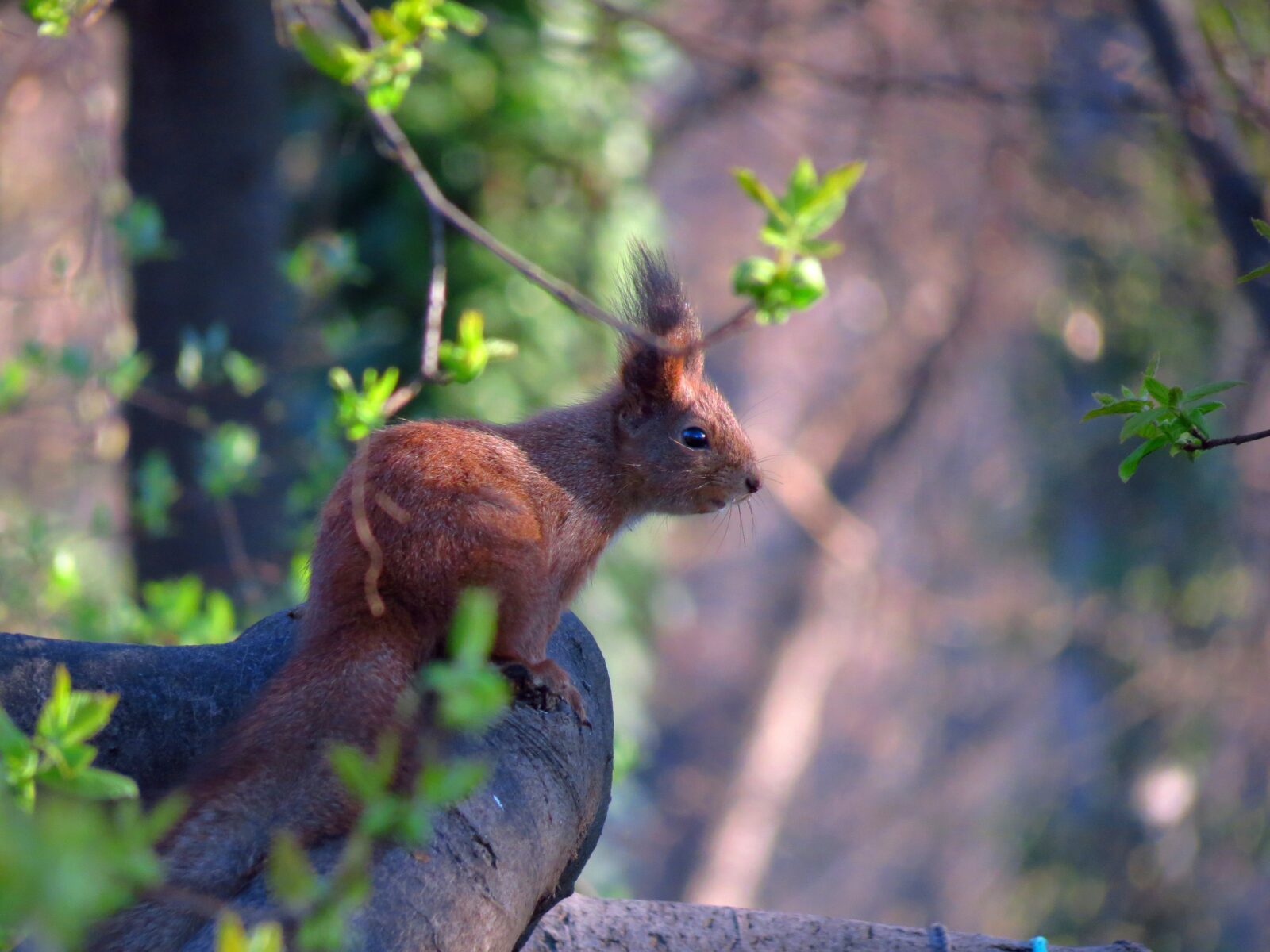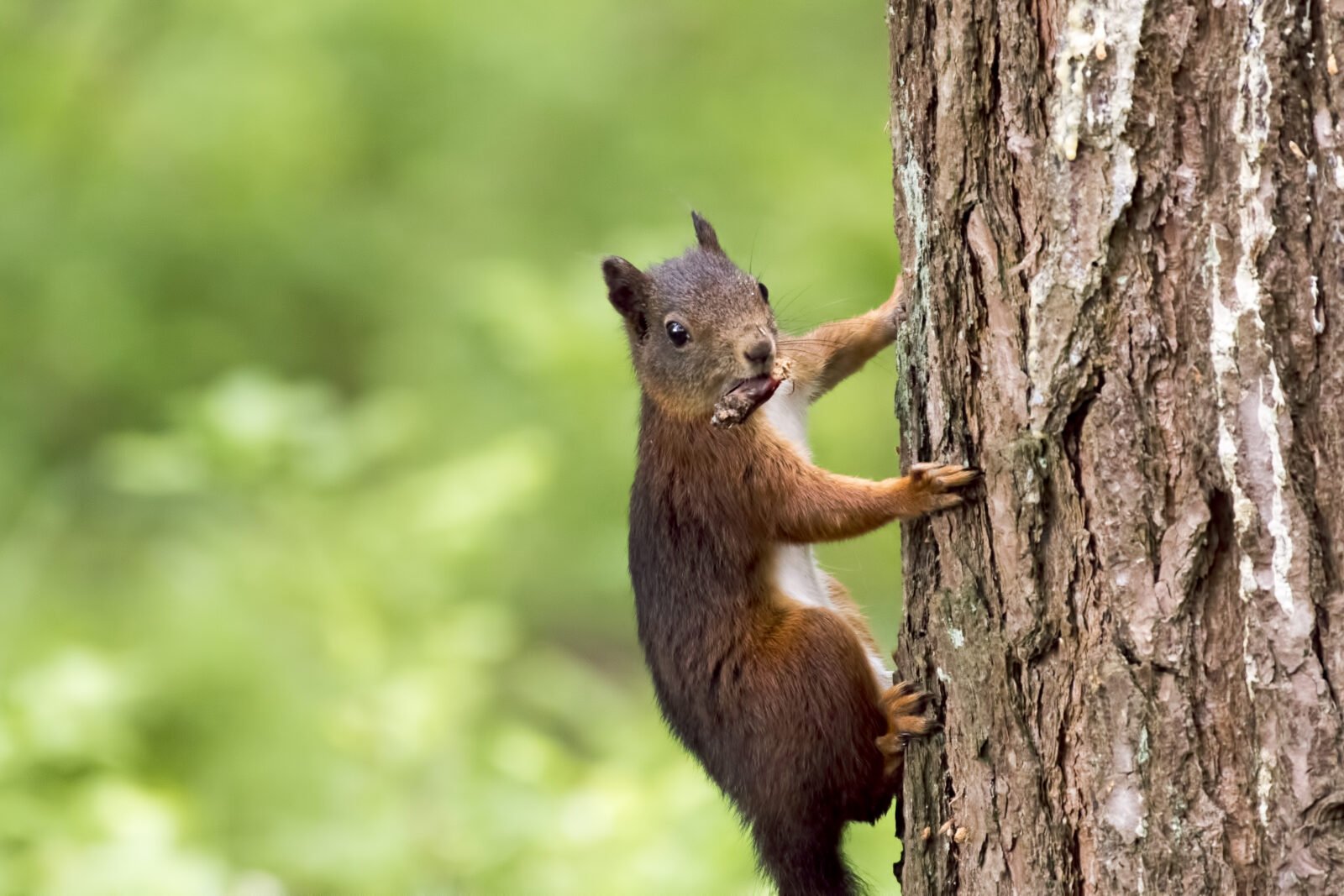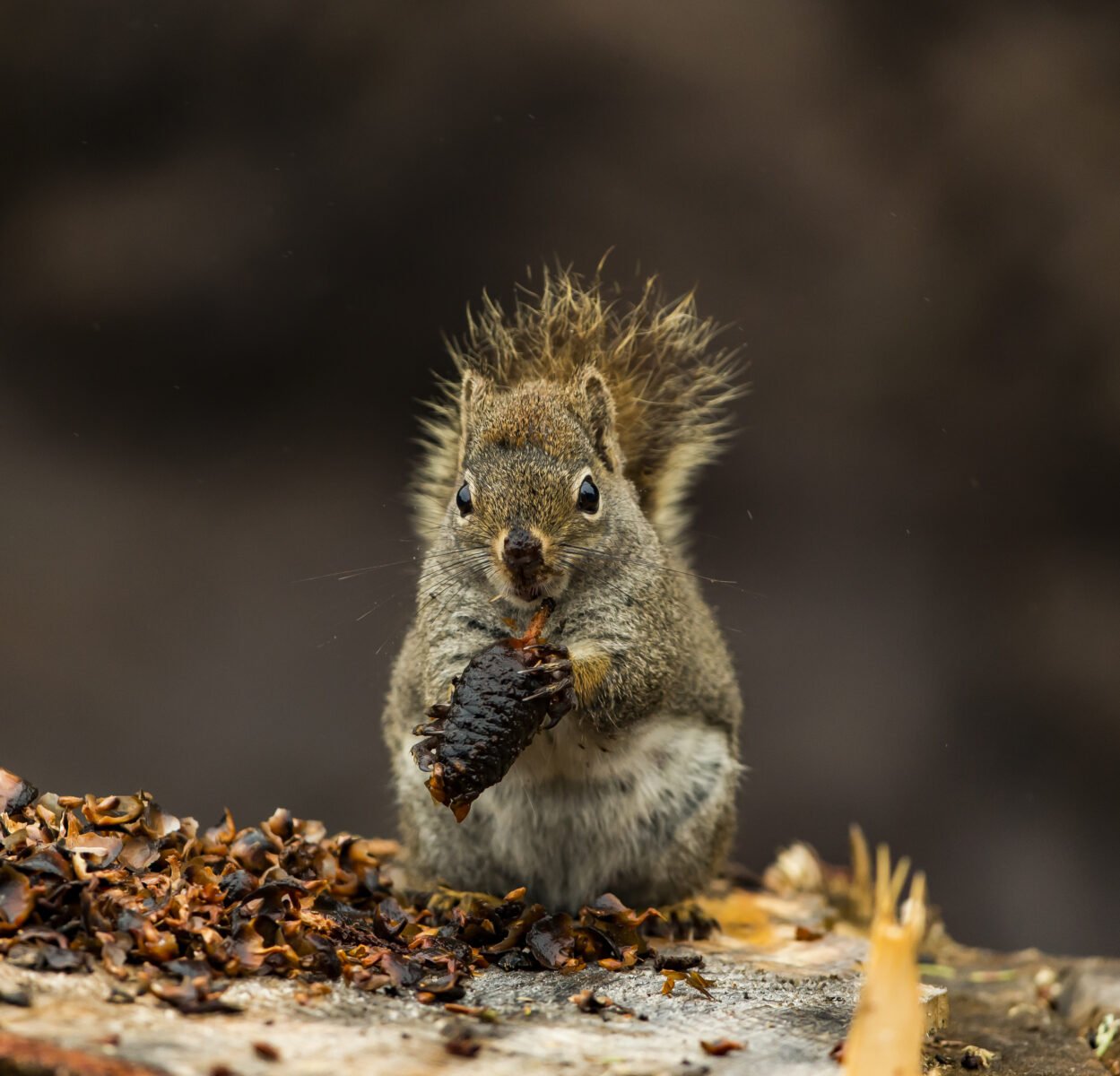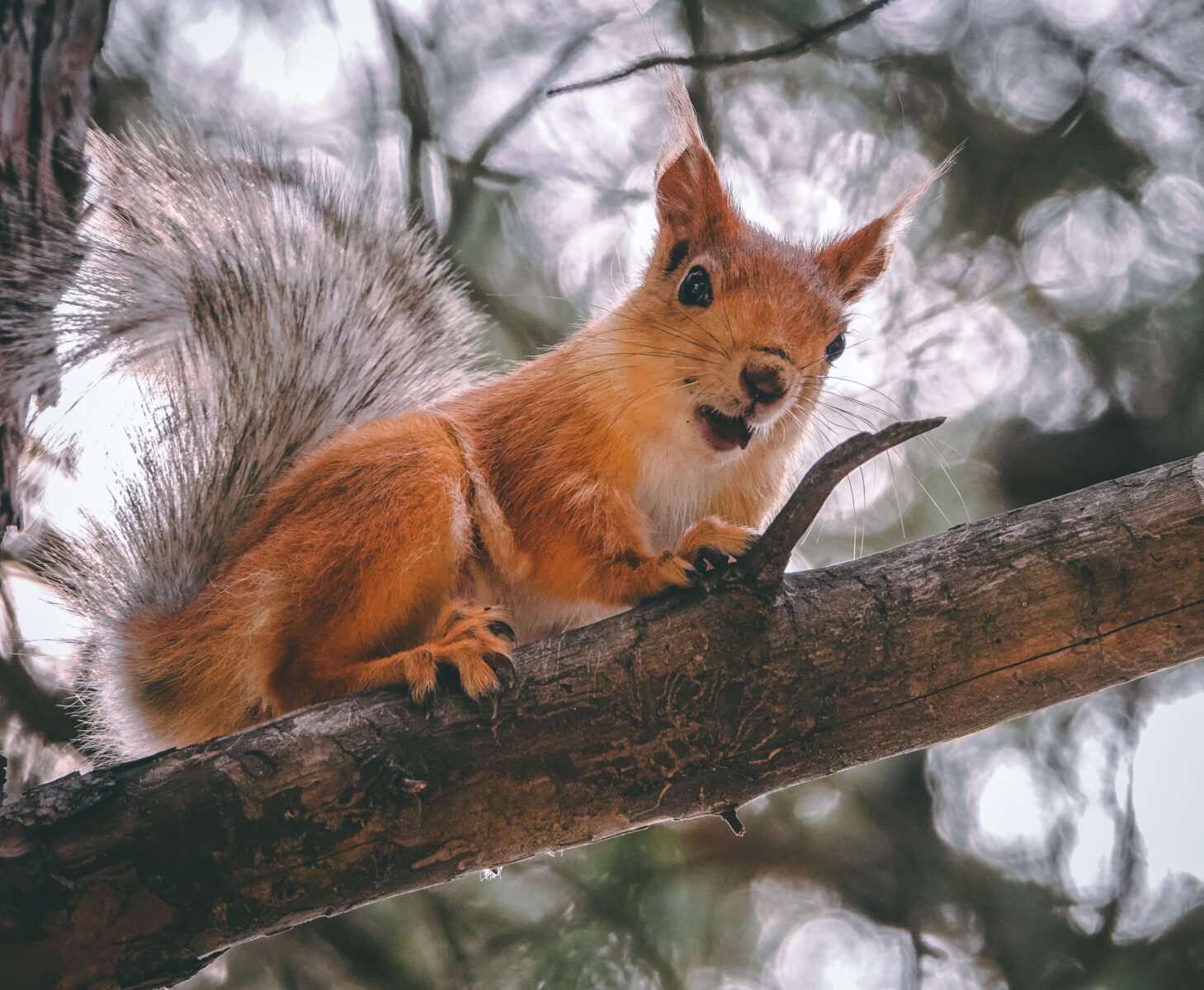The red squirrel is a furbearer that has already made its own introduction if you’re one who can justly claim woods experience anywhere in the woods from Colorado to Alaska, from Florida to California. That could hardly be said of any other native mammal.
Weasel, deer, fox, and rabbit try to escape being noticed and may succeeding doing so for weeks, even where they are fairly popular. Even the omnipresent little white-footed mouse prefers to hide whenever possible. Not so, the Chickaree, as Red is also known.
They are quite apt to court attention and will actually scold till they get it. They will rob your camp of any unguarded or carelessly placed food, and from a safe perch, cuss at you as only they can in lieu of grace for the welcome godsend. So much for a fast glimpse of this species — especially Sciurus Canadensis, of our Northeaster states and Canada.

A dozen other forms or geographical varieties of the common Red Squirrel are recognized by the naturalists. With three or four of the more western sub-species I have had considerable real-life experience and I find them very similar in behavior, as well as much alike in appearance to be clearly mere varieties. Still, however, I have yet to find any of this far-flung family that equals the Red for volume, variety, and carrying the power of vocal expression. One at least, the Douglas squirrel of the far West is, in my experiences, silent to the points of being dim by contrast with its Eastern cousin.
So we may well take the common Red of our Northeastern woods for further discussion. The Reds are the smallest of all of our squirrels. The latter do not include the various chipmunks and so-called ground squirrels. All the true squirrels are bushy-tailed tree climbers and, in comparison to most of them, the tiny Reds would appear as miniatures.
As already stated, what the chickaree lacks in size it makes up for in its voice. Its prevailing color is an olive brownish above in the summer, more reddish on legs, tail, feet, and ears, white near the muzzle and eyes, and on all the underparts.

A broad black stripe along the sides separates the dark upperparts from the white below. In wintertime, the black side stripe is missing. Males and females are alike in color and marking. The plume-like, bushy tail is a conspicuous feature, adding not only beauty and grace to the animal’s appearance but to its every act. A very useful member, it serves as a rudder and constant balance in the squirrel’s running and leaping act and is a sort of a parachute at times, curled over the back — a characteristic position — it forms a windbreak.
Saucily jerked and twitched, it gives emphasis to the language in which the Red voices its low opinion of predators. In fact, the importance of its brush is vital, for it is commonly known that squirrels do not survive the loss of their tails for long. Moreover, it is a delicate member especially subject to injury or loss.
Of all his accomplishments, and there are many, Red excels as an aviator. From branch to slender, yielding brach it runs or bounds with all the nonchalance of a cat on a rug. It is, to the wildwood, what the human on the flying trapeze is to “the big top.” Once, and only once, as I have previously described in this department, I saw it miss.

This is so rare, its confidence so complete, that when you see it happen it appears to be like the purposeful fumble of an expert juggler adding drama to its act. To its better-known talents we can add swimming too. Many experienced observers have given ample eye-witness testimony on this point. The Red is quite the expert on crossing wide bodies of water.
It’s not a hibernator. No snow is too deep, no temperature is too low that its tracks may not be seen linking tree-trunk to tree-trunk. Its trail is often crossed only by that of the snowshoe rabbit or none whatsoever. Its food for the winter season — that part of it which consists of nuts — is harvested mostly during the fall and buried shallowly in the ground. Mushrooms, seeds, fruits, and available meat or vegetable go to the variety of its omnivorous diet.
Still, in general, the cones of pine and spruce are its regular menu. It is well known that Red squirrels and Grays will not tolerate each other. It does appear that the Reds can and do drive the Grays from any piece of woods which they care to take over. How they do it is still something of a question. I has been widely conjectured and believed, that the Reds emasculate the Grays. Most naturalists dismiss this idea as a myth, too ridiculous for serious consideration.

Red’s home is a softly lines tree-hollow or a domed contraption of shredded bark, leaves, twigs, and grass, resembling a crow’s nest a few yards up a tree. The few young are born in the spring, are active outdoors by the middle of summer, quickly becoming indistinguishable from their folks. The economic status of the Red is an old point of hot dispute. It has been branded a bloody and determined robber of birds’ nests, destroying eggs and young whenever possible.
It has been defended by many who know it well as quite a different character. It seems that the whole thing boils down to individual behavior. Doves are supposed to be peace-loving, harmless creatures, yet I have seen a few with nasty habits. The good done by Chickaree in planting and reforesting is beyond dispute. And, anyway, would anyone who knows the woods want to lose this fascinating Red Riding Hood of the forest?


